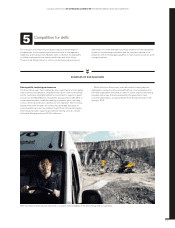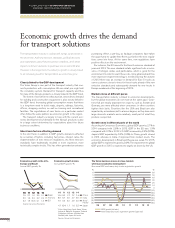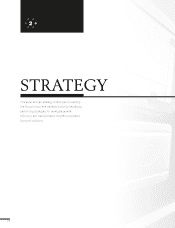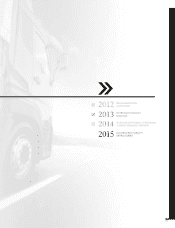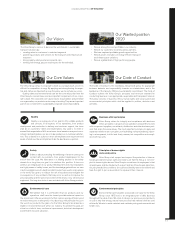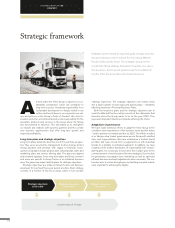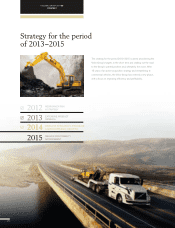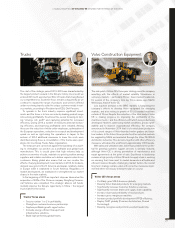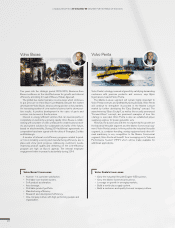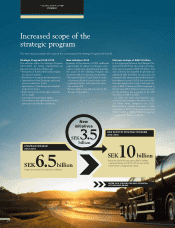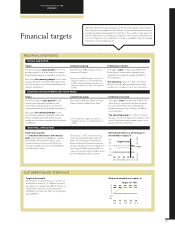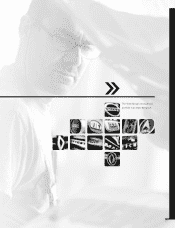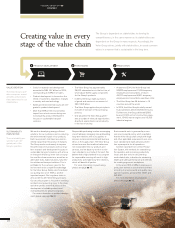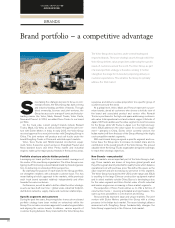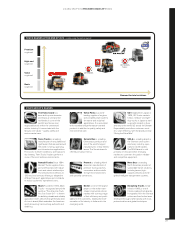Volvo 2014 Annual Report Download - page 25
Download and view the complete annual report
Please find page 25 of the 2014 Volvo annual report below. You can navigate through the pages in the report by either clicking on the pages listed below, or by using the keyword search tool below to find specific information within the annual report.
The start of the strategic period 2013–2015 was characterized by
the largest product renewal in the Group’s history. As a result, we
entered 2014 with a product portfolio of trucks that strengthened
our competitiveness. Customer focus remains a top priority as we
continue to expand the range of products and services offered
under our strong brands suited to unique customer needs in vari-
ous markets, according to President and CEO, Olof Persson.
To operate in the truck industry requires signifi cant invest-
ments and the focus is to turn our industry-leading product range
into a strong profi tability. To achieve this, we are focusing on turn-
ing “volumes into profi t” and capturing potential for increased
effi ciency. During 2014, a number of measures aimed at increas-
ing effi ciency and improving profi tability were initiated. Among
these are the reduction of white-collar employees, optimization of
the European operations, reduction in research and development
spend as well as right-sizing the operations in Japan. In the
autumn of 2014 additional measures to lower the costs were
identifi ed, among these a consolidation of the trucks sales oper-
ations into one Group Trucks Sales organization.
The measures are carried out against the backdrop of us want-
ing to strengthen our position as a profi table and global truck
manufacturer. This is crucial given that high volumes help us
achieve economies of scale, maintain our priority position among
suppliers and retailers and allow us to deliver superior value to our
customers. Being global also means that we can counter the
effects of varying development in our markets. In 2014, for instance,
demand was good in North America and Japan, relatively stable
in Europe while it weakened in South America. Regardless of
market development, we maintained or strengthened our market
shares in the main markets.
In the beginning of 2015 an important step was taken when the
acquisition of 45% of the Chinese company Dongfeng Commer-
cial Vehicles was completed. This strategic alliance will funda-
mentally improve the Group’s opportunity in China – the largest
truck market in the world.
Trucks
Trucks’ focus areas
• Secure number 1 or 2 in profi tability.
• Strengthen customer business partnership.
• Capture profi table growth opportunities.
• Innovate energy-effi cient transport and
infrastructure solutions.
• Build high-performing global teams.
A GLOBAL GROUP 2014 STRATEGY STRATEGY FOR THE PERIOD OF 2013–2015
The mid-point of Volvo CE’s three year strategy sees the company
wrestling with the effects of market volatility. Slowdowns in
somekey markets – particularly China – have created headwinds
for several of the company’s nine key focus areas, says Martin
Weissburg, head of Volvo CE.
Low machine demand in the BRIC markets is hampering the
company’s efforts to develop Volvo equipment for emerging
markets, and also reining in growth of SDLG branded machines
outside of China. Despite the reduction of the total market, Volvo
CE is making progress on improving the profi tability of the
machines it sells – and the effi ciency with which new products are
developed. However, addressing market conditions, product prof-
itability and to improve organizational effi ciency the company
announced in November 2014 that it is to wind down production
of its current ranges of Volvo-branded motor graders and back-
hoe loaders. In the future these products will on selected markets
be supplied by SDLG and marketed through the Volvo CE/SDLG
distribution networks. This decision, together with other effi ciency
measures, will reduce the workforce by approximately 1,000 people.
With sales and utilization rates lower than predicted, the poten-
tial for growing customer support services is similarly reduced,
although Volvo CE is driving penetration of maintenance and
repair agreements at the point of sale. Excellence in leadership
remains a high priority at Volvo CE and its supply chain is working
on ensuring that it can react to market demands in a fl exible and
effi cient manner. Despite challenging market factors the overall
long term strategy remains valid, with corrective measures imple-
mented where necessary to keep the plan on course.
Volvo Construction Equipment
Volvo CE’s focus areas
• Profi tably grow SDLG business globally.
• Develop Volvo-branded products for emerging markets.
• Signifi cantly increase Customer Solutions revenues.
• Signifi cantly increase dealer and supply chain capability.
• Increase share and profi tability of road products.
• Increase gross margin per machine.
• Increase product portfolio development (PPD) effi ciency.
• Deploy CAST globally (Common Architecture, Shared
Technology).
• Develop, recognize and promote excellent leadership.
21


